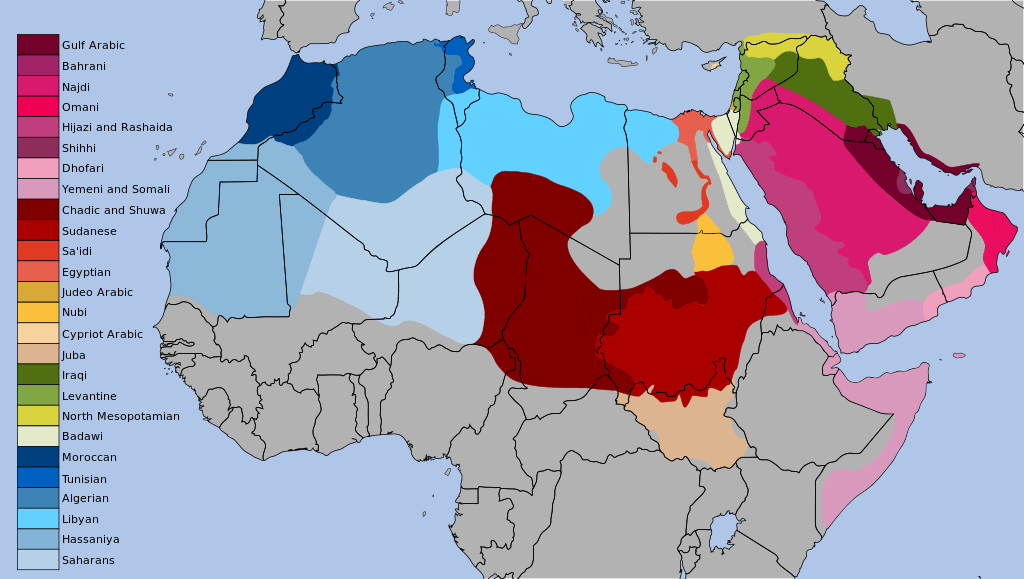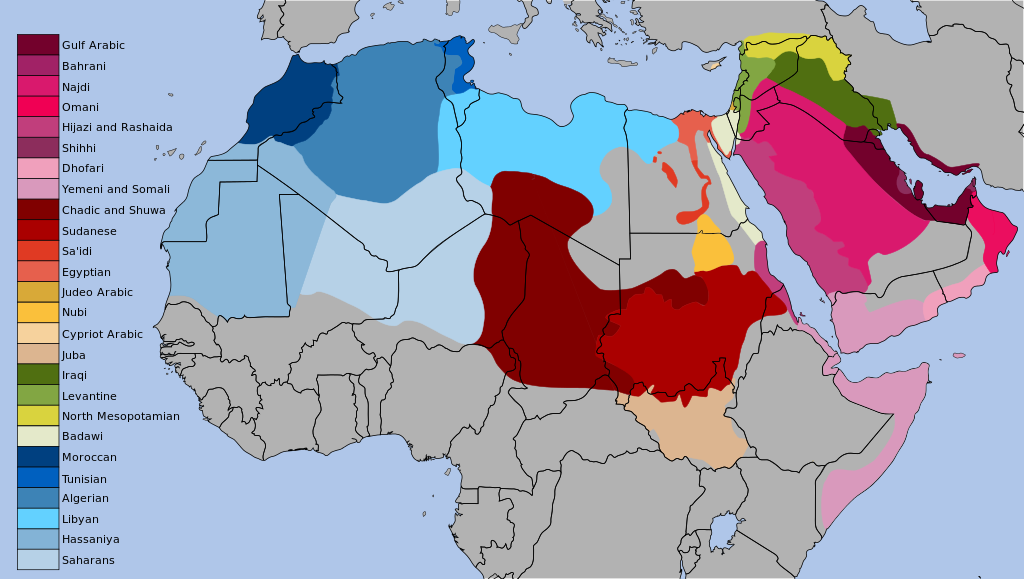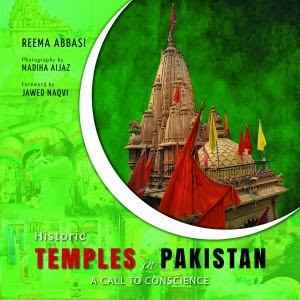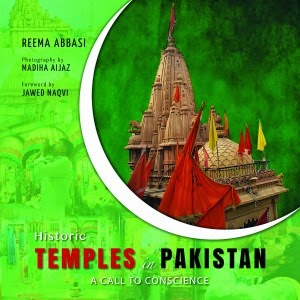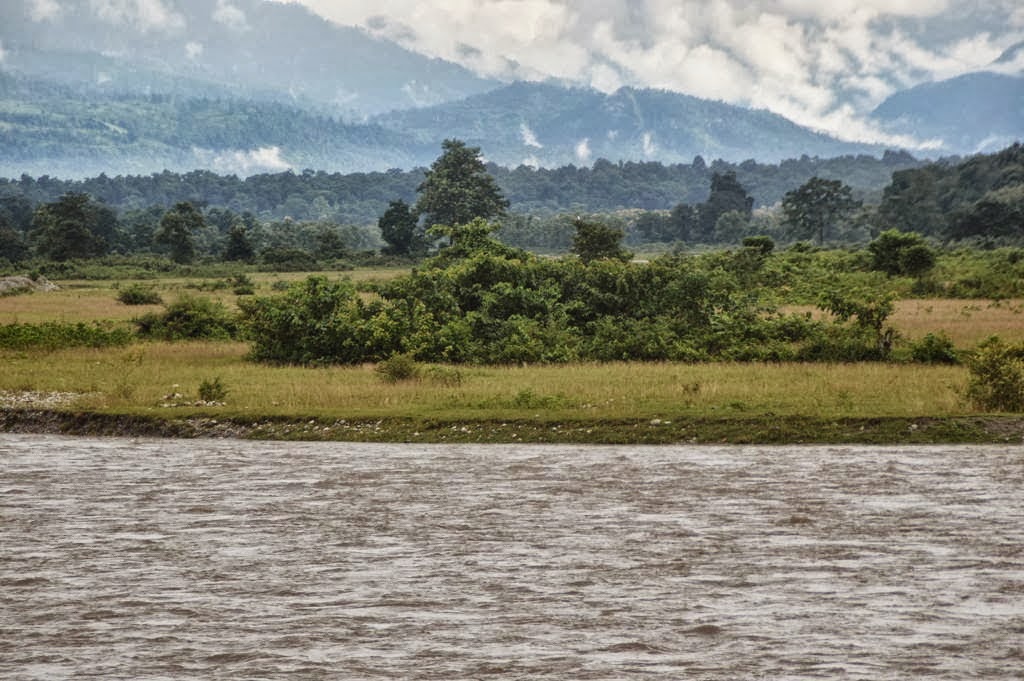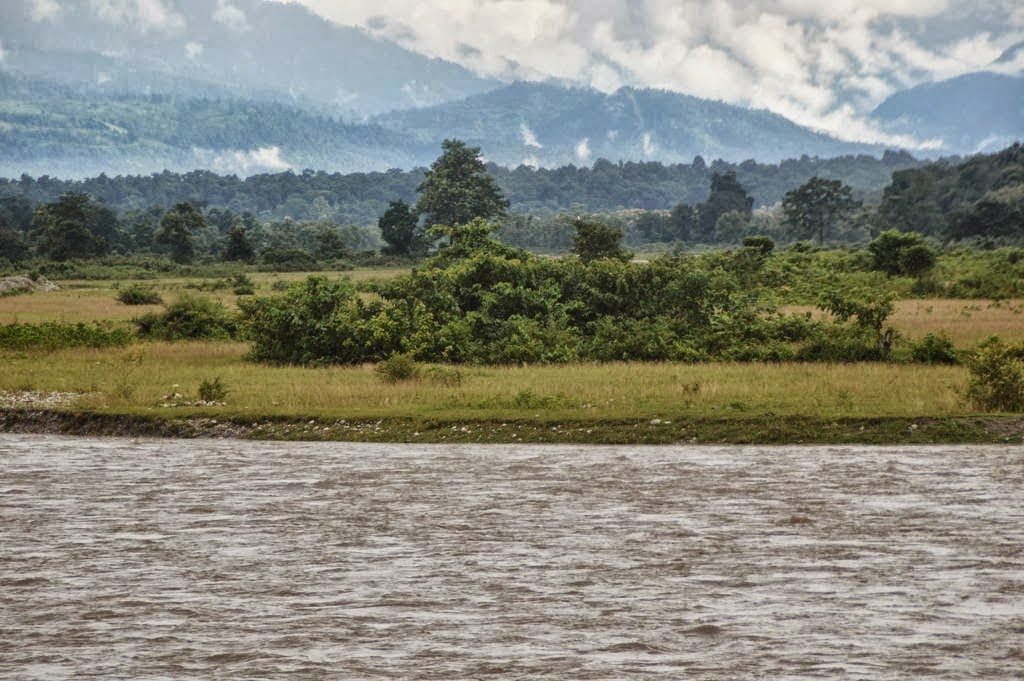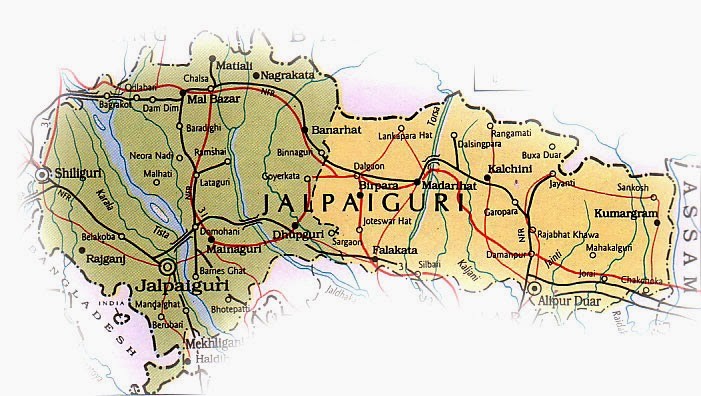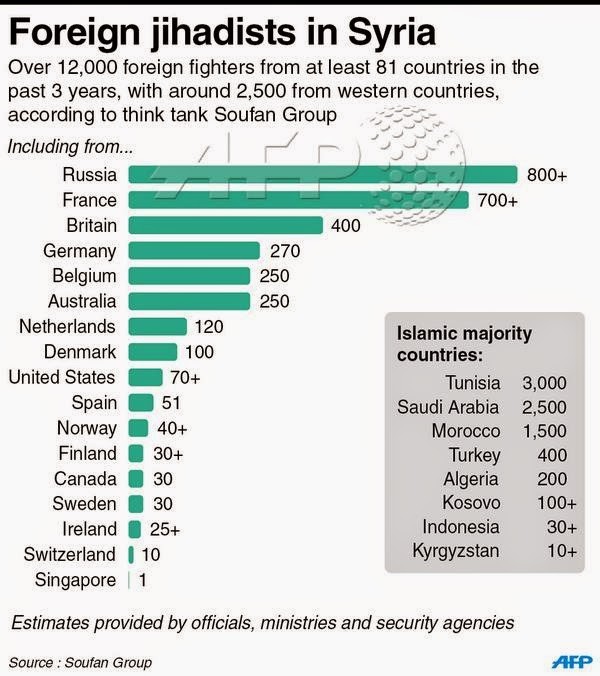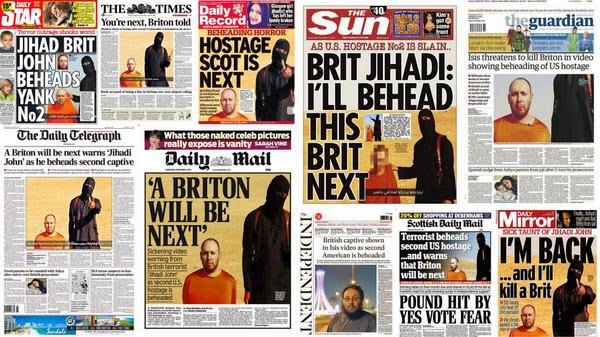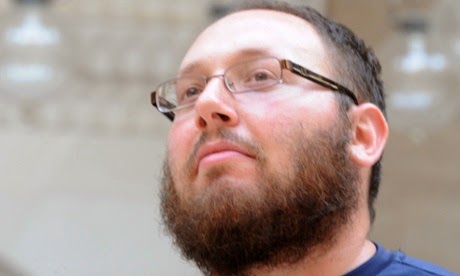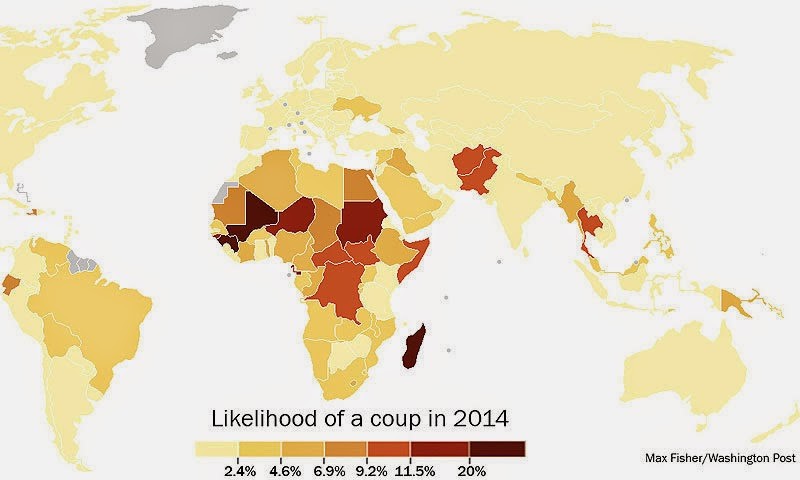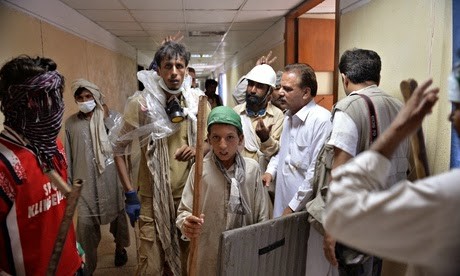negative given Washington’s friendliness toward the Egyptian
military and hostility toward Muslim Brotherhood….But in fact “no matter which side of the domestic dispute an
individual was on, he or she was likely to be opposed to the United
States”…..
Despite U.S. attempts to stay neutral in the
conflict, both military and Muslim Brotherhood supporters believed the
U.S. was working on behalf of the other side…..
….
How do modern Arabs (approx 4mil on Twitter out of a total population of 400 million) feel about America (and Americans)? A careful analysis of tweets tells us a lot- they really hate Iran (much more than Israel AND America) and much more.
This leads us to a question that has always been a point of confusion for us: who are the Arabs and what are the major Arab communities? Just like India can be (imperfectly) divided by linguistic communities (and except for the South these communities are all loosely tied together through an ancestral Sanskrit bridge), we may get a better understanding of Arabic communities by observing the distribution of Arabic dialects [ref. Wiki-map below].
….
…..
Is anti-Americanism motivated by specific U.S. policies or a more
generalized antipathy to American culture? Do people who hate U.S.
foreign policy also hate Americans?
…
These are among the questions addressed in an innovative new study
of anti-American attitudes among Arab Twitter users, which was
presented at the American Political Science Association annual meeting
here in D.C. last week.
The short version of the working paper’s
conclusion is that Arabic Twitter is generally anti-American (though to a
lesser extent than it is anti-Iranian) but that these attitudes are
motivated more by specific events than general hostility to American
culture. Unfortunately, these attitudes seem to be present on multiple
sides of the region’s political divides.
The authors, political scientists Amaney Jamal and Robert Keohane of
Princeton and David Romney and Dustin Tingley of Harvard, worked with
the analytics company Crimson Hexagon to analyze the sentiment of Arabic
Twitter in 2012 and 2013.
….
Twitter users aren’t a perfect proxy for
public opinion—the population is likely weighted toward younger, more
educated people, and wealthier countries like Saudi Arabia and the
United Arab Emirates are overrepresented. The data, though, can give a
snapshot of what 3.7 million (the number of active users in Arab
countries) people are thinking and provide valuable information from a
number of countries that have restricted traditional public opinion
polling in the past.
Overall, the authors found that “the conversation on Twitter, in
Arabic, about the U.S. is especially negative towards U.S. policy; the
conversation about U.S. society is also mostly negative but much
smaller.” But that’s less interesting than how Arabic Twitter responded
to specific events.
The first test case is the 2013 overthrow of Egyptian President
Mohamed Morsi. Seventy-four percent of the tweets referencing the United
States around the time of Morsi’s fall were negative, and only 3
percent were positive. (The rest were neutral tweets noting some piece
of news.)
…
You might expect that supporters of the coup would be less
negative given Washington’s traditional friendliness toward the Egyptian
military and hostility toward Morsi’s Muslim Brotherhood. But in fact,
the authors write, “no matter which side of the domestic dispute an
individual was on, he or she was likely to be opposed to the United
States.” This fits with what was observed in reporting from the time:
Despite U.S. attempts to stay (or at least appear) neutral in the
conflict, both military and Muslim Brotherhood supporters believed the
U.S. was working on behalf of the other side.
Next, they analyzed tweets about the conflict in Syria, particularly
following the chemical weapons attack in August 2013, when it appeared
likely the U.S. would launch a military intervention against Bashar
al-Assad’s government.
Again, there was little support for the United States—just about 2
percent of tweets, all of them from opponents of Assad. But while regime
supporters were more anti-American, “even for the anti-regime Tweeters
there were 250 percent more anti-U.S. tweets than pro-U.S. tweets before
the chemical weapons incident, and about 1,000 percent more after the
event.”
While on opposite sides of the Middle East’s bloodiest conflict in
decades, these Twitter users were fairly united in antipathy to the U.S.
But attitudes toward the U.S. are a bit more nuanced than you might think. Looking at the online response to the anti-Muhammad Innocence of Muslims video,
which prompted large and often violent demonstrations throughout the
Muslim world in the fall of 2012, the authors found that the majority of
Arabic tweets either urged followers to ignore the film or pushed for
individual action against it. Relatively few, however, could be
construed as “clear condemnation of American society in general.”
The authors write: “We did not find tweets with statements such as
‘This means that all Americans hate us’ or ‘All of American society and
people should be condemned.’ ”
They also looked at instances where Americans were the victims.
Following the 2013 Boston Marathon bombings, the largest number of
non-neutral tweets (20 percent) expressed the opinion that the attack
wasn’t a significant news event, followed by those expressing fears of a
backlash against Muslims in the U.S. Eight percent supported conspiracy
theories blaming the U.S. government for the attack.
Again, there’s evidence of anti-Americanism—only 5 percent of tweets
expressed sympathy for the victims—but in this case the authors didn’t
observe tweets celebrating the attack on U.S. society.
In the case of a non-political event, 2012’s Hurricane Sandy, there
were again a large number of users saying the storm wasn’t important.
Ten percent said the U.S. had it coming. But virtually the same number
of tweets rejected that view, and “25 percent of tweeters (almost
80,000) commented favorably on the U.S. government’s handling of the
disaster, often as a contrast to the incompetence of Arab governments.”
Overall, about a “third expressed views that can be interpreted as
generally favorable toward American society.”
If all this makes it seem as if Arab tweeters are knee-jerk
anti-Americans, you should see how they feel about Iranians. While
trailing the United States in total references, Iran got more mentions
on Arab Twitter than any other non-Arab country, ahead of Israel,
Turkey, and India.
…
The authors found political sentiment toward Iran to
be “overwhelmingly negative,” with so few positive tweets that the
proportion was impossible to estimate. While attitudes toward America
itself, rather than American policy, often seem more ambivalent than
negative, views of Iran are starker. “In both the polling data and even
more in our Twitter data, one observes admiration for American popular
culture, helping to create such ambivalence. There is no such Arab
admiration for Iranian popular culture, and no discernible ambivalence,”
they write.
In terms of efforts to improve America’s image in the Arab world, the
paper contains both good and bad news. Arab Twitter users’ antipathy
toward America itself, or Americans, doesn’t appear to be exceptionally
hostile. But suspicion and opposition to U.S. foreign policy appear to
be so deep and so widely shared, even by those on opposite sides of
other contentious issues, that it’s hard to imagine how the U.S. could
begin to rebuild trust.
There may be a lesson here for the Obama administration’s foreign
policy. For understandable and sometimes admirable reasons, the
administration has often tried to avoid being identified with one side
or another in domestic disputes in the Arab world. The U.S. admonished
the Egyptian military’s crackdown on the Muslim Brotherhood, but eventually normalized relations. It provided aid to some of the rebels fighting Assad, but not enough to really turn the tide of the civil war.
…
Obama’s intention here may have been to combat the perception that
the U.S. meddles in the internal affairs of smaller states. But in some
cases, by refusing to take a side, the American government may have
deepened the suspicion that nobody should trust the United States.
….
Link: slate.com/whatever_america_does_arabic_twitter_will_hate_it.html
…..
regards
